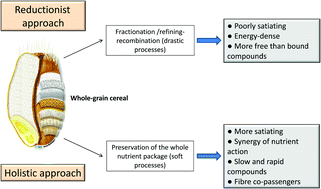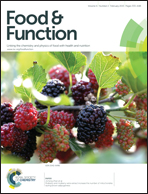A shift toward a new holistic paradigm will help to preserve and better process grain products’ food structure for improving their health effects
Abstract
This review aims at emphasizing the role played by physical characteristics and physico-chemical properties of the food matrix on the digestive and metabolic fate, and health effects of grain products. It is today obvious that the food matrix conditions the health effects of food products and that we are able to modify this matrix to control the digestive fate of foods, and the metabolic fate of nutrients and bioactive compounds (reverse engineering). In other words, there is no more reason to consider nutrition in a quantitative perspective (i.e., a food is only the sum of its macro-, micro- and phyto-nutrients) but rather according to a qualitative perspective involving concepts of interaction of nutrients within the matrix, of enzymatic bioaccessibility, bioavailability and metabolic fate in relation to release kinetics in the gastrointestinal tract, and food nutrient synergy. This new perspective on the health potential of foods also reflects the urge to consider preventive nutrition research according to a more holistic and integrative perspective after decades of reductionist research based on the study of the health effects of food components in isolation. To illustrate the importance of food structure, attention has been focused on grain-based products such as rice, leguminous seeds and nuts, and on soft technological treatments that preserve food structure such as pre-fermentation, soaking and germination.


 Please wait while we load your content...
Please wait while we load your content...